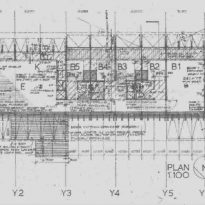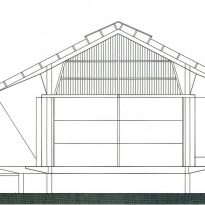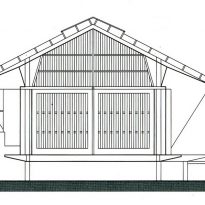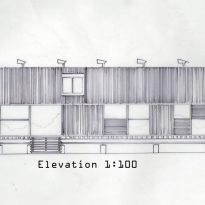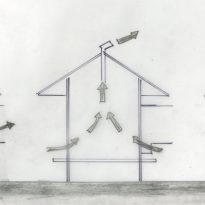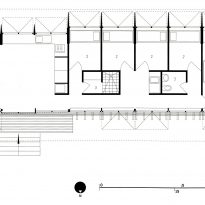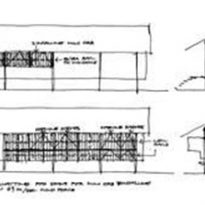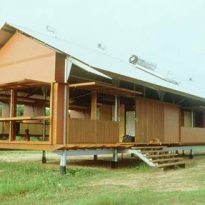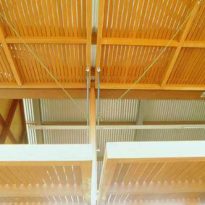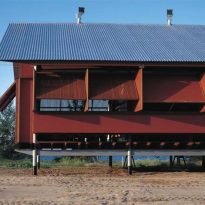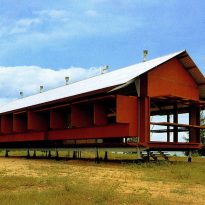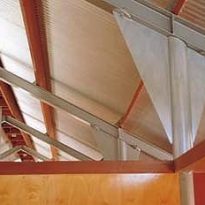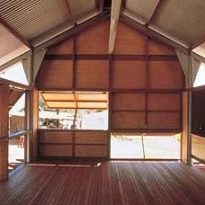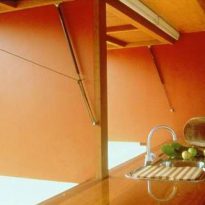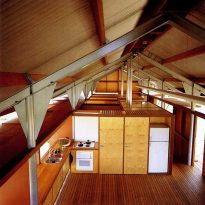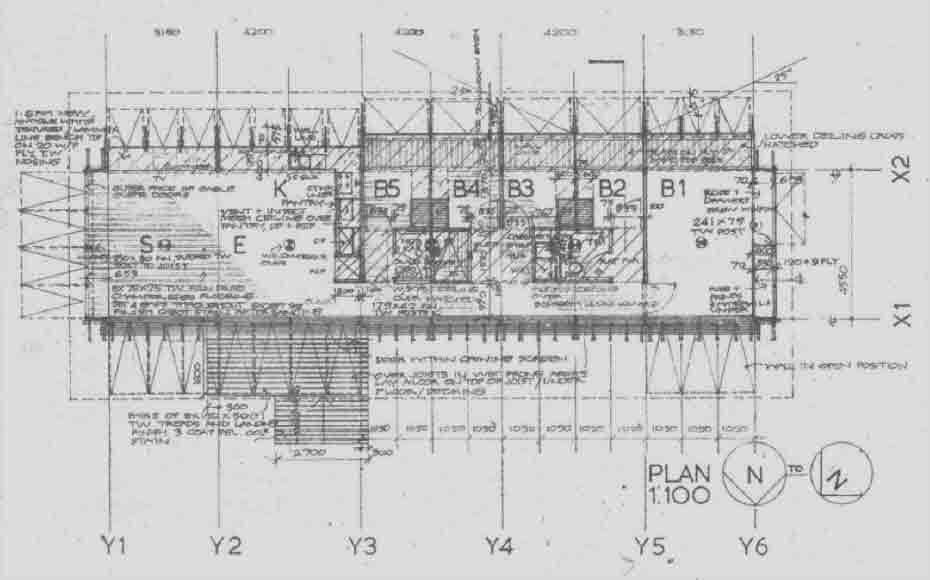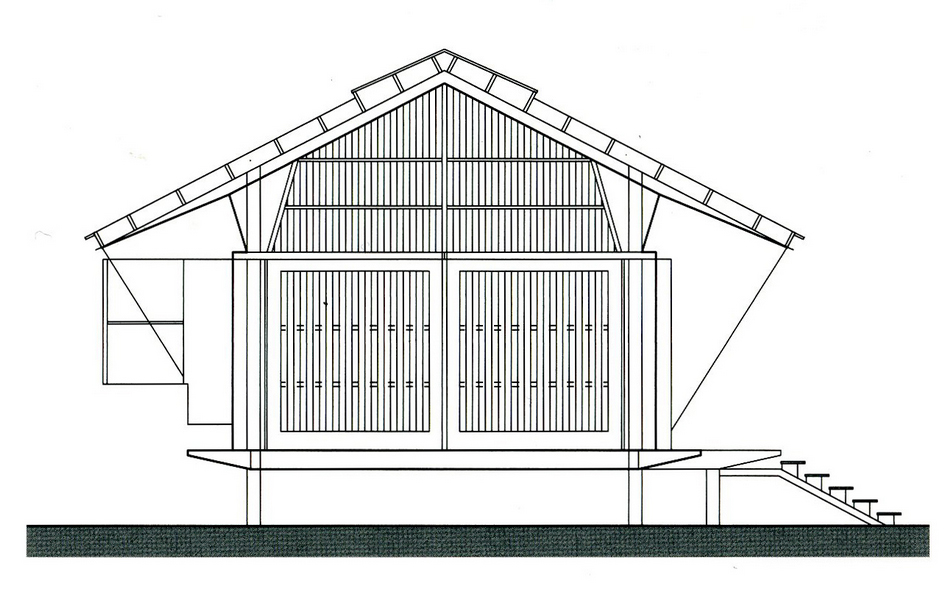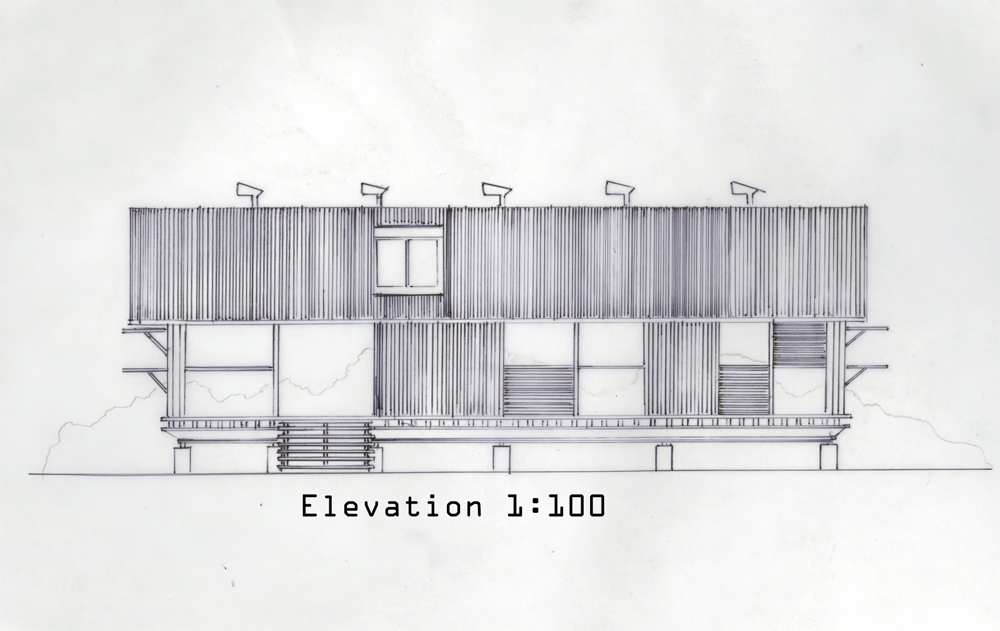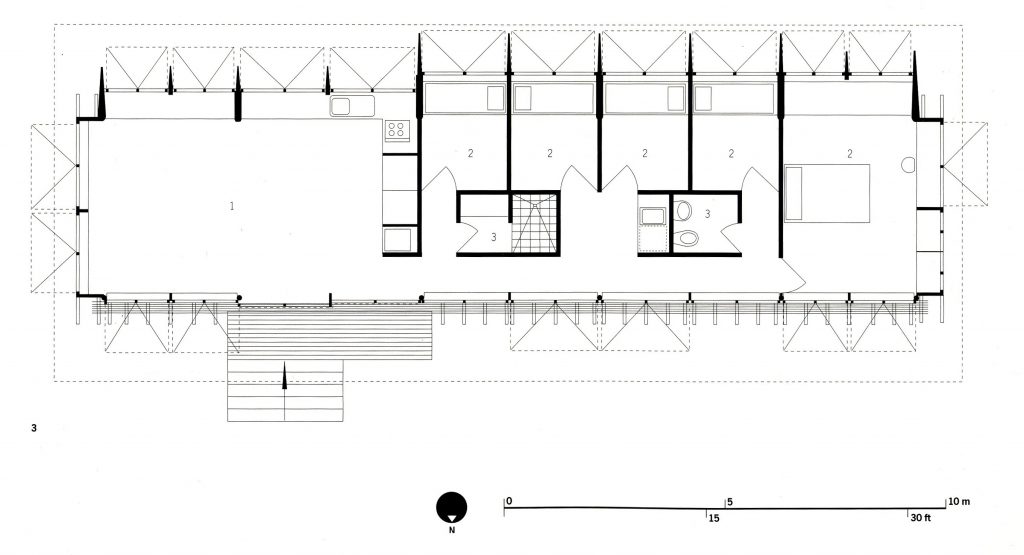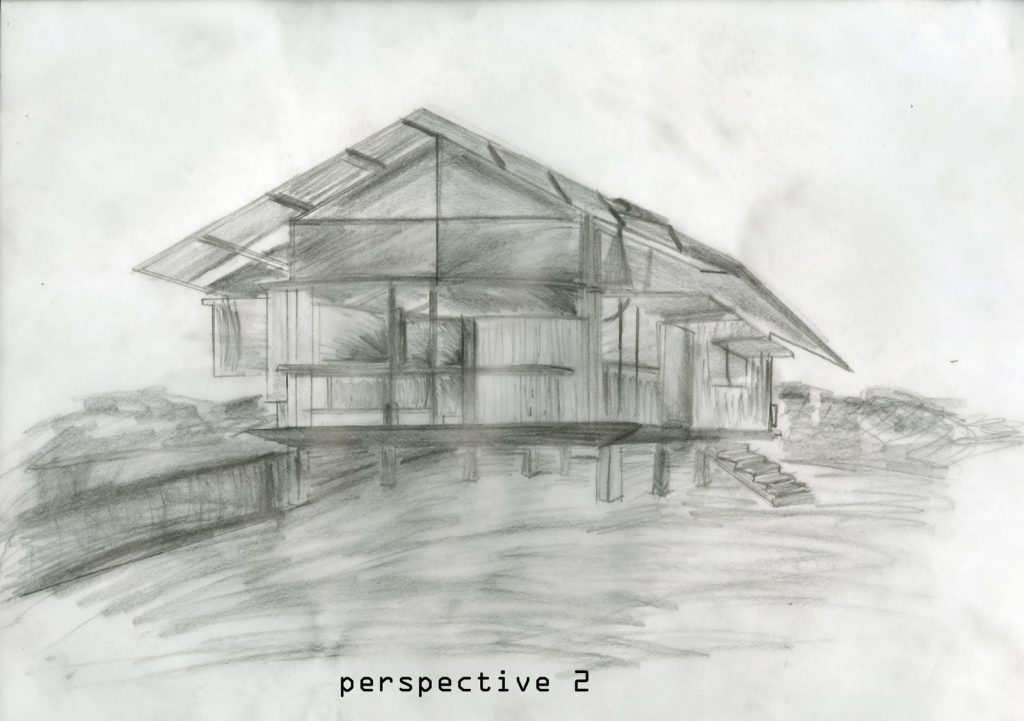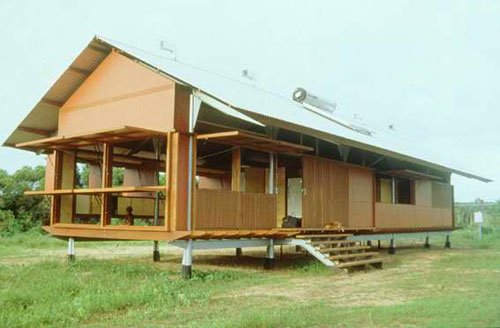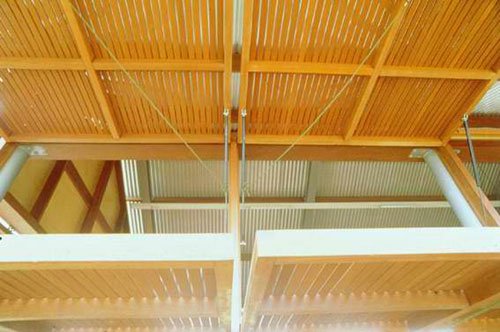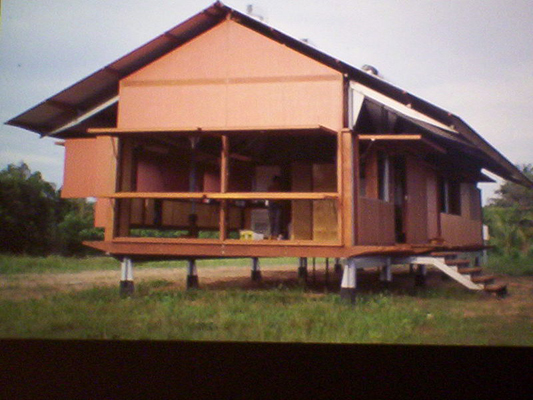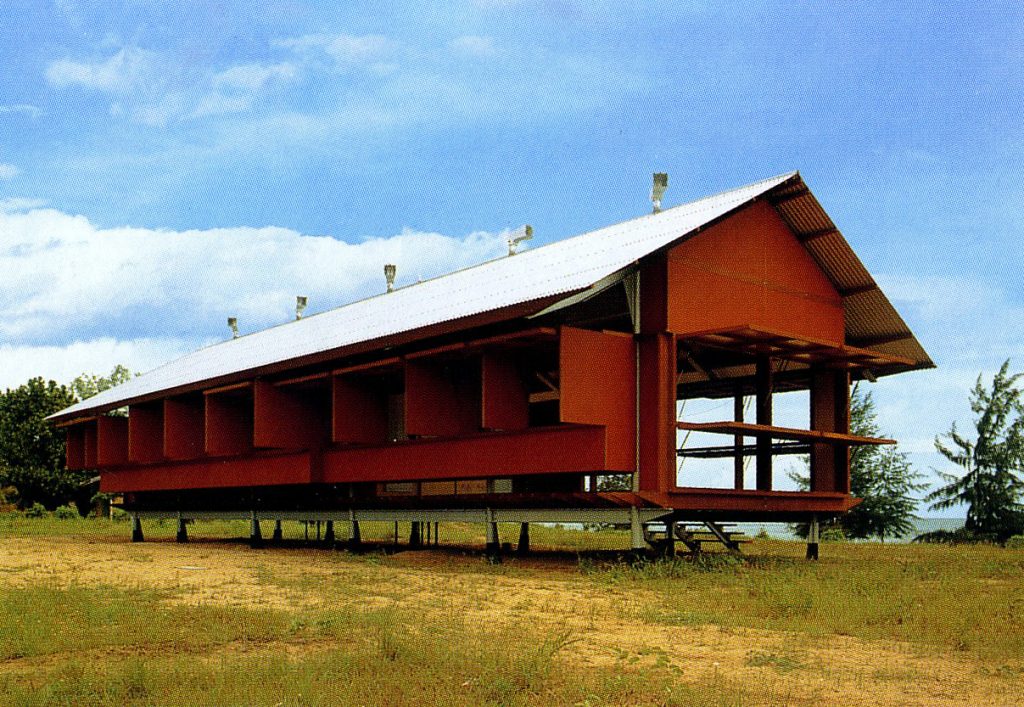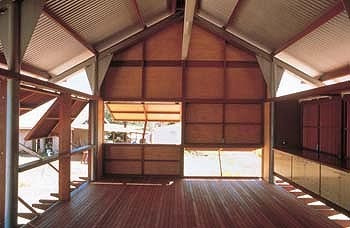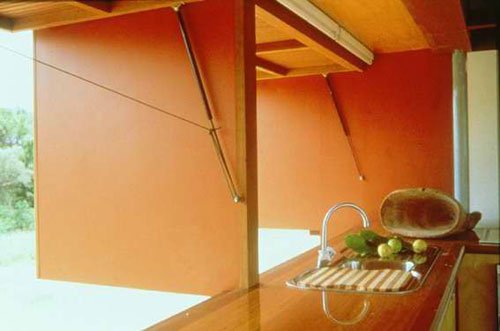Marika-Alderton House

Introduction
Built for Aboriginal artist, Banduk Marika and her partner, architect Glenn Murcutt faced the challenge of creating a livable home in a tropical climate where temperatures never drop below 25 º and can reach 40 º. Its design should avoid methods “culturally alien” as the air conditioning mechanical intervention.
Another challenge was to keep out the various species of reptiles and spiders, some poisonous, and create a structure strong enough to withstand hurricane winds common place.
Before designing the Marika-Alderton house for about three years Murcutt did extensive research about Aboriginal culture and history. Part of the research was to share life with family, which helped him better understand customer needs.
Location
The house is located in Australia in the Yirrkala Community, Eastern Arnhem Land, Northern Territory (Yirrkala Community, Eastern Arnheim Land, Northern Territory). To the south and west of the house is the Mangrove forest and northward the Arafura Sea, location causing winds and strong tides, with minimum temperatures of 25 and maximum of 35 degrees and high humidity.
Being built in a rural Aboriginal, access to the house is by dirt roads or sea.
Concept
Marika-Alderton house is an economic and sustainable prototype sample serving the Australian authorities to build comfortable spaces, and adapted to the place, where they can live the aborigines.

Australian authorities have always built solid masonry houses poorly ventilated and uncomfortable, especially in summer and humid tropical climate of northern Australia, which caused them to be abandoned or destroyed, houses were inappropriate and unusable.
Marika House demonstrates the ability of Glenn Murcutt to adapt its principles and ideas of architecture to the different demands of the tropical climate. This thoroughly studied tropical monsoon climate, the movement of the wind, sun and water over three years.
Some scholars criticize the house Marika disregarded the political and historical situation of the native culture, arguing that Aborigines have never built fixed and permanent structures. But those who love the houses say Glenn Murcutt combined his own creative vision with Aboriginal ideas, creating a unique and valuable bridge between cultures. The opening and closing system, similar to that of a plant, the architect behind the concept of a flexible shelter exists in harmony with the rhythms of nature (Lynch 2008).
Construction
The house is a steel gable on a platform high straight. The gable roof provides ample overhangs to keep the sun off the four walls of the house, being mainly in the north facade generous. On the south side have been arranged vertical slats that protect deep inside the sun grazing summer, early in the morning and late in the afternoon.
Ventilation
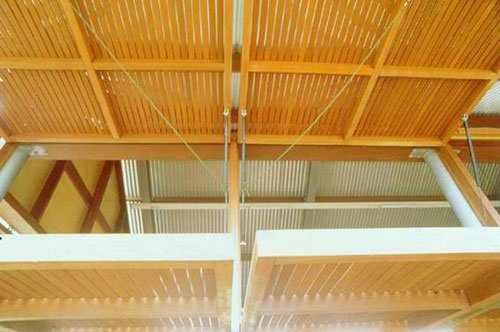
• Fins
The house is sheltered from the sun by using wide eaves. Rotating tubes along the roof expel warm air and vertical fins, facing the ocean, capture, slow speed and the incoming fresh and fragrant ocean breezes in the interior spaces of the house creating a more comfortable environment.
• Walls
The surfaces of the vertical walls in the interior of the house, there are always upward. These walls are cut a little before reaching the ceiling, which allows heat in closed spaces, is raised above the roof along each environment and exit more quickly.
• Structure
The structure rests on piles allowing wind flowing below, helping to cool the soil. This elevation also protects the home from storm, flood, animals and safeguard the natural vegetation of the area, as it is intact.
Spaces
Access to the house is by the north, using some steps that save up on stilts
The one-story house, elevated on stilts open in all directions and that is not a closed volume, but a shaded platform, with all kinds of racks, spoilers and brise soleil, without glass windows. Instead, the house has shutters that slope down to provide additional shade when necessary, also let in light and air flow when open. All rooms except the bathrooms enjoy all the headroom available.

The house is divided into two separate areas: the large open living area and the bedroom area.
• Living room
The living area is on the northeast corner, with a kitchen in one corner, followed by the laundry area. This location allows the morning, when the residents of the house make the most of their preparation, laundry, food, exercise, work, this is the cooler area.
• Bedrooms
Plans Marika Alderton house are designed so that the bedrooms are located in the southwest of the house. At night the southwest corner happens to be the coolest part of the house, establishing a more comfortable sleeping arrangements. Besides providing a cooler sleep environment, platforms on which rose sleeps 2 meters above the ground so that the circulation of air below the bed is harnessed as possible. The bedrooms are 5, one principal, and 4 smaller, also ranked a sink and a shower room.
Structure and materials
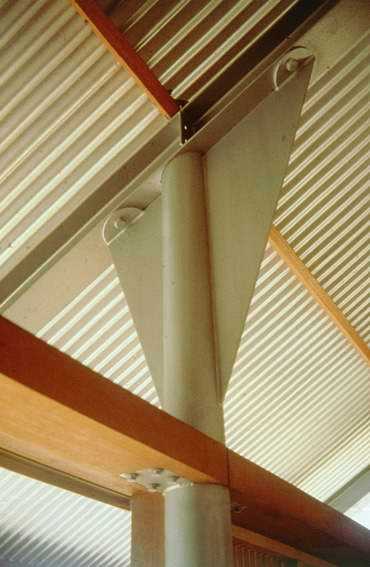
The architect uses simple materials, walls painted or stained wood, eucalyptus wood blinds and metal roofs coarrugada.
The rectangular structure is steel and hardwood to withstand the tropical rains. This prefabricated structure was performed by two local craftsmen and assembled in a few days, reducing costs, time and energy required to lift a building. We must also add that for the reduction of expenditure included the donation of local steel company that brought the 6 BHP light steel frames. The plumbing and electrical components have been centralized to cut costs.
Structural stability is achieved through its length, combining wood slats in that direction with the structural steel frame positioned in the shortest direction. In the metal structure round sections are used, with powerful triangulations help withstand hurricane winds. Steel cables timber holding straps which in turn hold the corrugated deck.
Video



